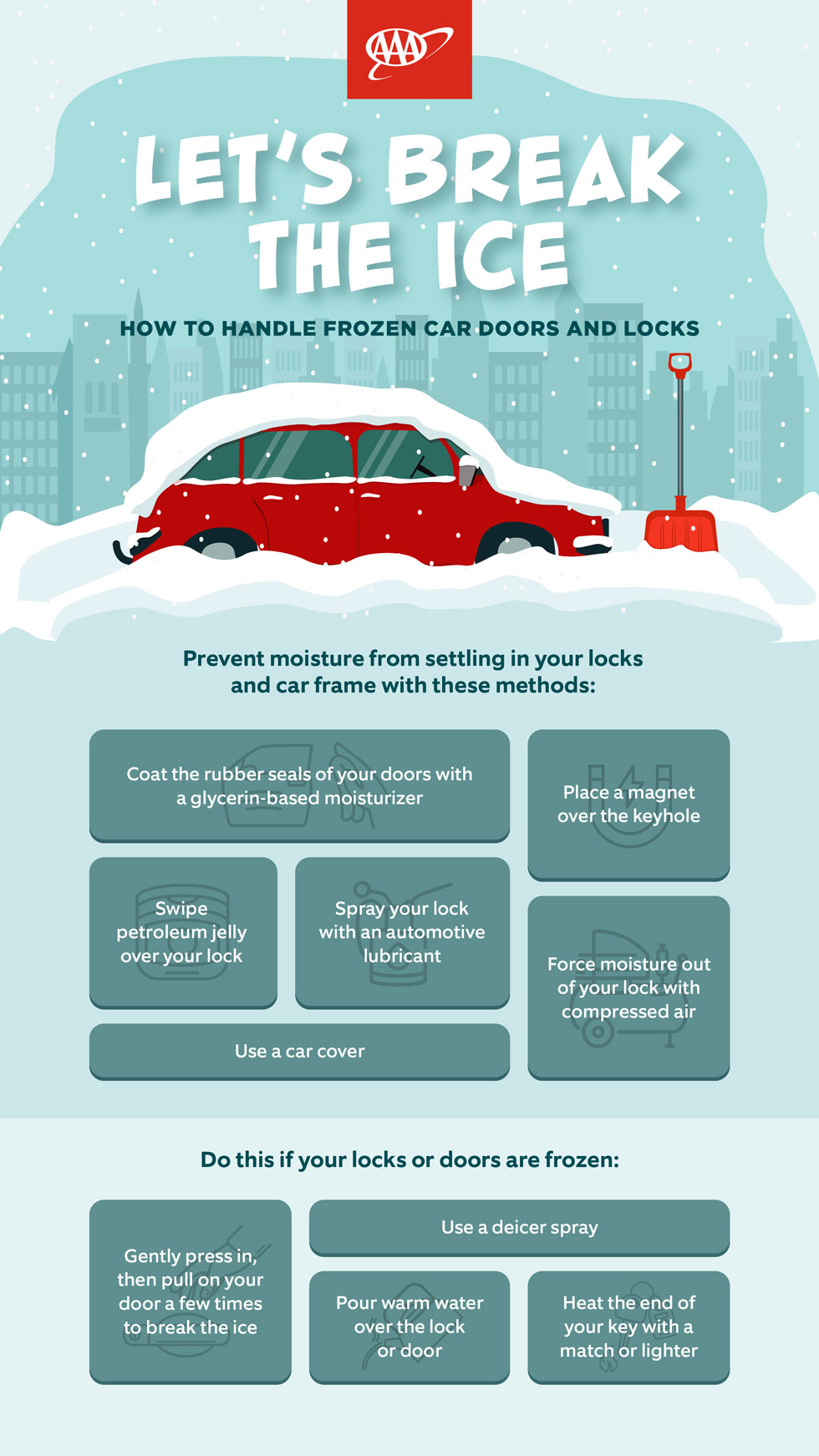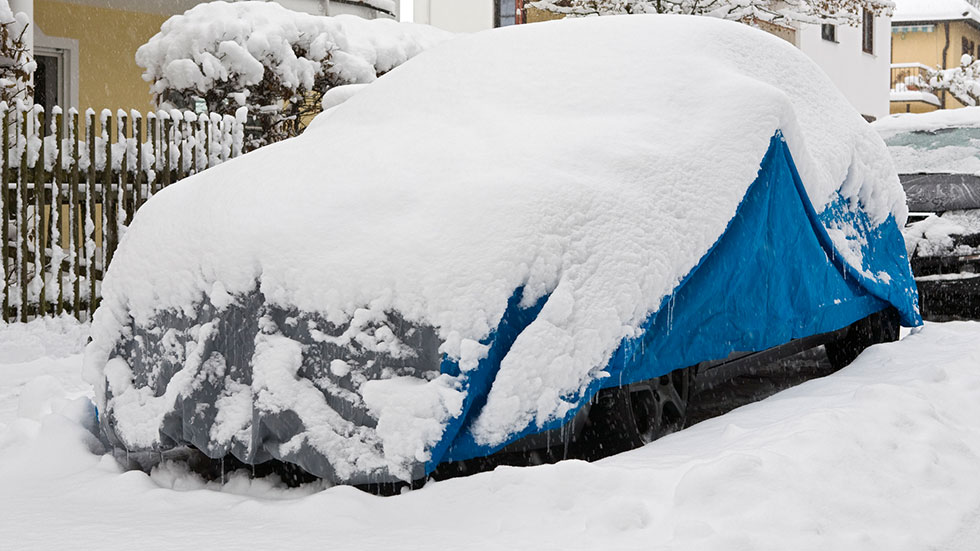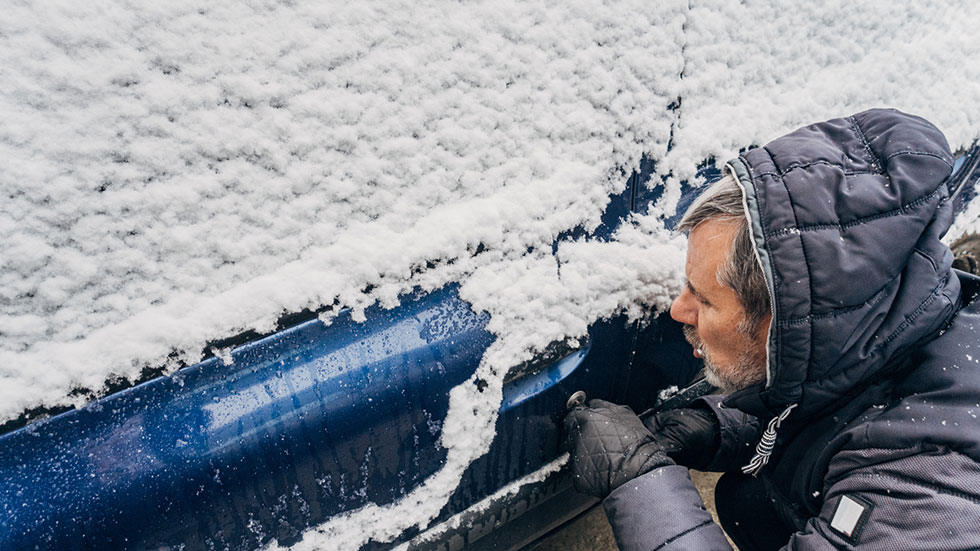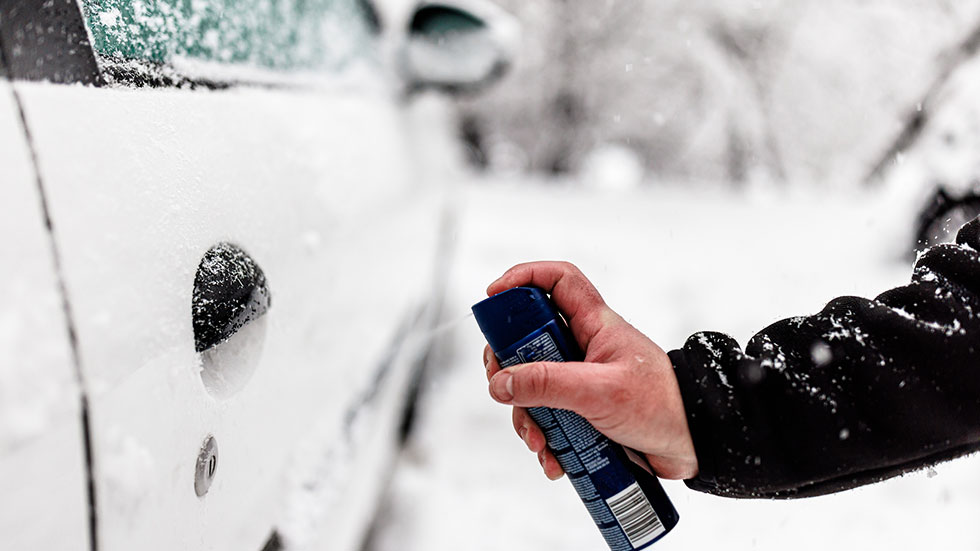Unlocking Winter Woes: A Guide to Thawing Frozen Car Doors and Locks
The best ways to handle a frozen car door or a frozen car lock including how to prevent frozen car doors


As much as covered or garage parking does to protect vehicles from the elements, the fact is that for many motorists, indoor parking is a luxury they cannot afford. For those of us drivers who regularly park our cars in a driveway, on a street, or in an open parking lot while we’re at work, winter weather can be the bane of our driving existence.
Is there anything worse than going out to your car on a cold winter morning only to find your wipers stuck to the windshield or a layer of ice on your vehicle so thick it adds an extra ten minutes of defrost time to your daily commute? If there is, then it’s having frozen car doors and locks on top of it all. It’s hard to start thawing your vehicle if you can’t even get a door open to start it!

How to prevent frozen doors and locks on your car
When it comes to low temperatures and harsh winter weather, an ounce of preparation is truly worth a pound of cure, so to speak. So, when you expect freezing temperatures to arrive, taking some active steps to prepare your vehicle will save you time once the cold weather has arrived. Many of the tips and tricks around preventing exterior car parts like locks, wipers, and doors from freezing solid is just making sure moisture does not have a place to take hold.

How to prevent frozen car door locks:
Magnets
Magnets can work wonders to prevent moisture from getting into your lock and freezing it. By placing a magnet over the keyhole on your lock, you can prevent moisture from getting inside and freezing. Just be careful because freezing rain, sleet, or snow could cover the magnet and freeze it as well.
Compressed air
If you have a keyboard duster or other compressed air, blow it into the door locks with the provided nozzle to force out moisture and keep the locks dry.
Lubricants
Lubricant sprays like WD-40 work to keep parts moving and reduce friction, but they also help force out moisture and keep it away. Spraying your locks semi-regularly with a bit of automotive lubricant spray can prevent a frozen car door lock.
Jellys
Glycerin or Vaseline swiped over a door lock, then pushed inside a few times will coat the lock with a moisture-repelling lubricant that can prevent freezing.

How to prevent frozen car doors:
Coat rubber seals
The rubber seals around your doors can sometimes trap moisture that freezes, sticking the door shut. By applying a thin layer of glycerin-based moisturizer, you will prevent this seal from sticking to the vehicle frame and freezing shut.
Car cover
A relatively cheap but effective solution, car covers are great ways to protect your doors and locks from freezing moisture. They will also keep your windshield and mirrors ice-free, plus they preserve the clear coat and overall look of your car in the process.

What to do if your locks or door freeze
If your car doors or locks (or both!) are already frozen, there are a few things you can do to thaw them so you can get into the vehicle and get it warmed up. The important thing is that you DON'T use excessive force to try to break the ice by yanking on car parts. Not only can this damage your seals, but you could break off your door handle or cause other damage that will need to be repaired.
Press then pull on the car door
If you are able to unlock the car, but the doors are still frozen shut, try pushing with firm but gentle force on the door, then pull. Do this a few times, being careful not to break your door handle in the process. Sometimes this firm but gentle action can break the ice sealing the car door shut.
Keep a deicer
There are many de-icing products available at auto parts stores that are designed to help you get into a frozen car. Of course, they only work if they’re not trapped inside your car! Be sure to keep a deicer handy in your house where it will stay warm and be ready when you need it. You can also make your own deicer and keep it in a spray bottle. To make your own deicer, mix three parts vinegar to one part water. Apply your choice of deicer to the frozen car door locks or doors to thaw them.
Warm water
Heat some water, then pour it over the car doors and locks to try to melt the ice. This is a great method to quickly thaw doors and locks under certain freezing conditions. But, be careful not to use boiling hot water as the temperature shock on a cold surface like windows can cause damage.
Heat your key
Using a match or a lighter, heat the end of your key then try to thaw the frozen car door lock. Be careful though, if you have keys with electronic components or chips in them do not heat your key; the heat from an open flame could damage their circuitry or electronic components.
Unfortunately, winter weather is a cold reality drivers must deal with when they park outdoors. By doing what you can to prevent moisture from entering your car locks and doors, you should be able to easily get into your vehicle, even on the coldest, snowiest days, to get the engine started and warm up your car for the drive ahead.
